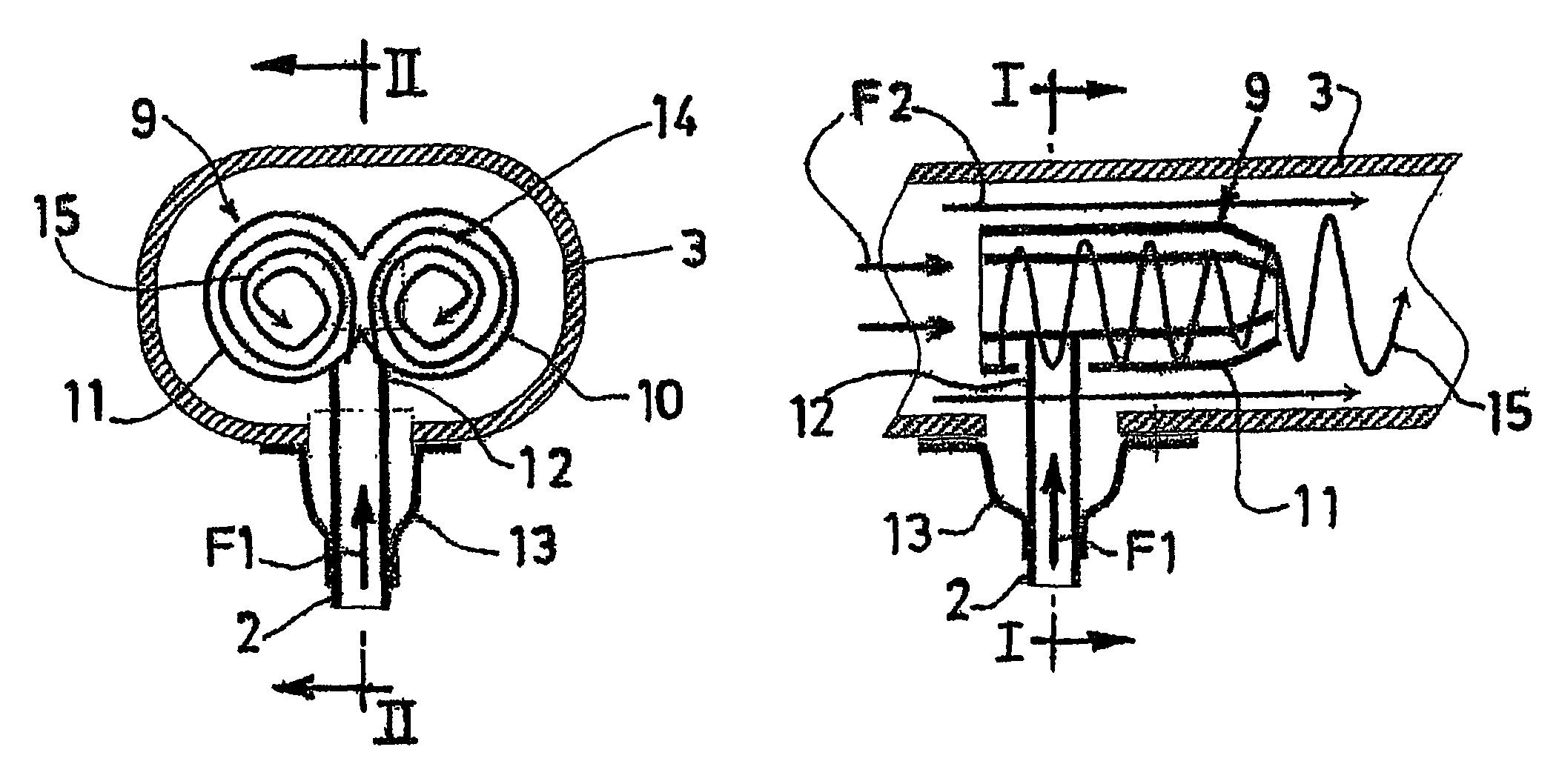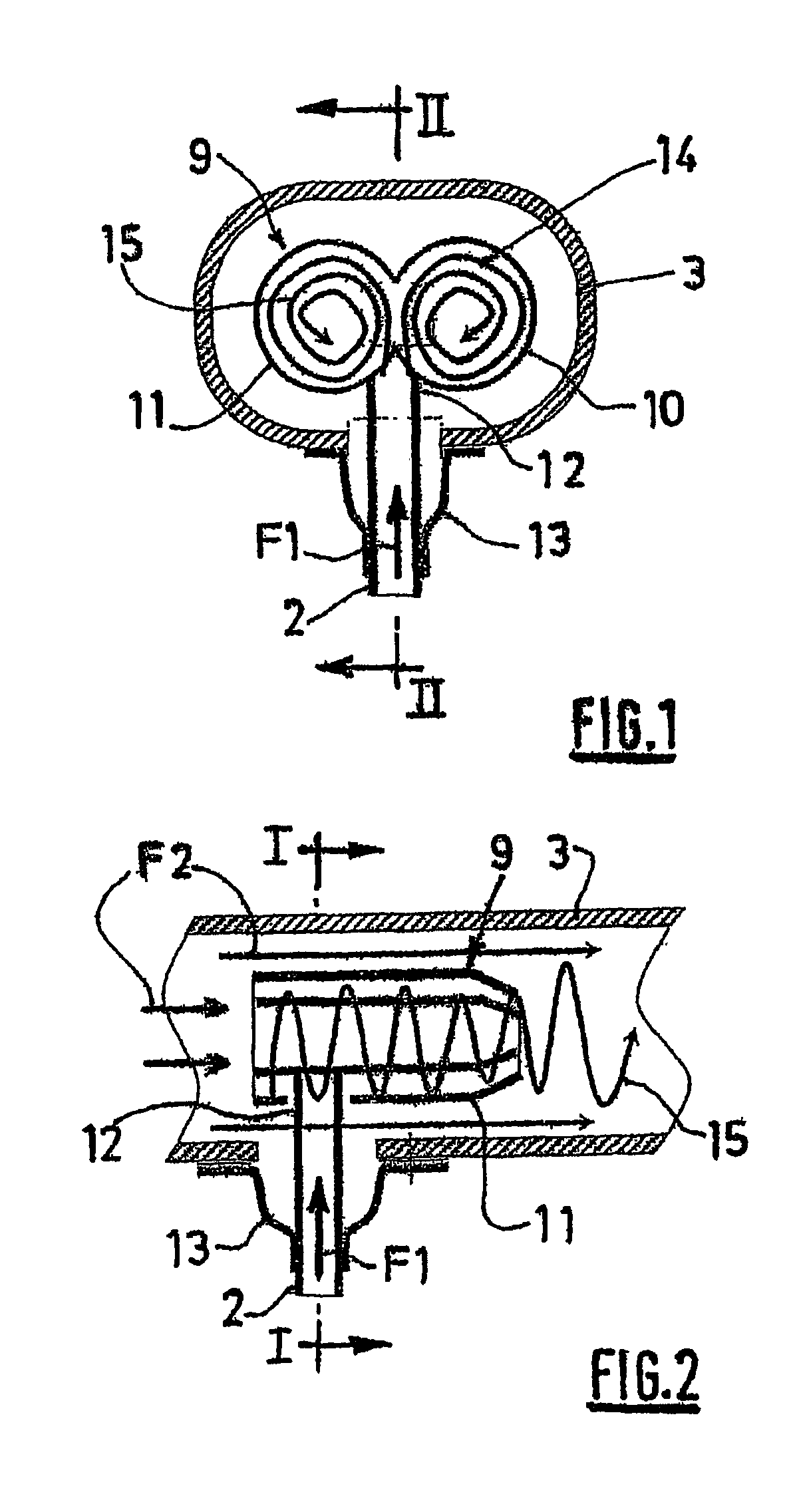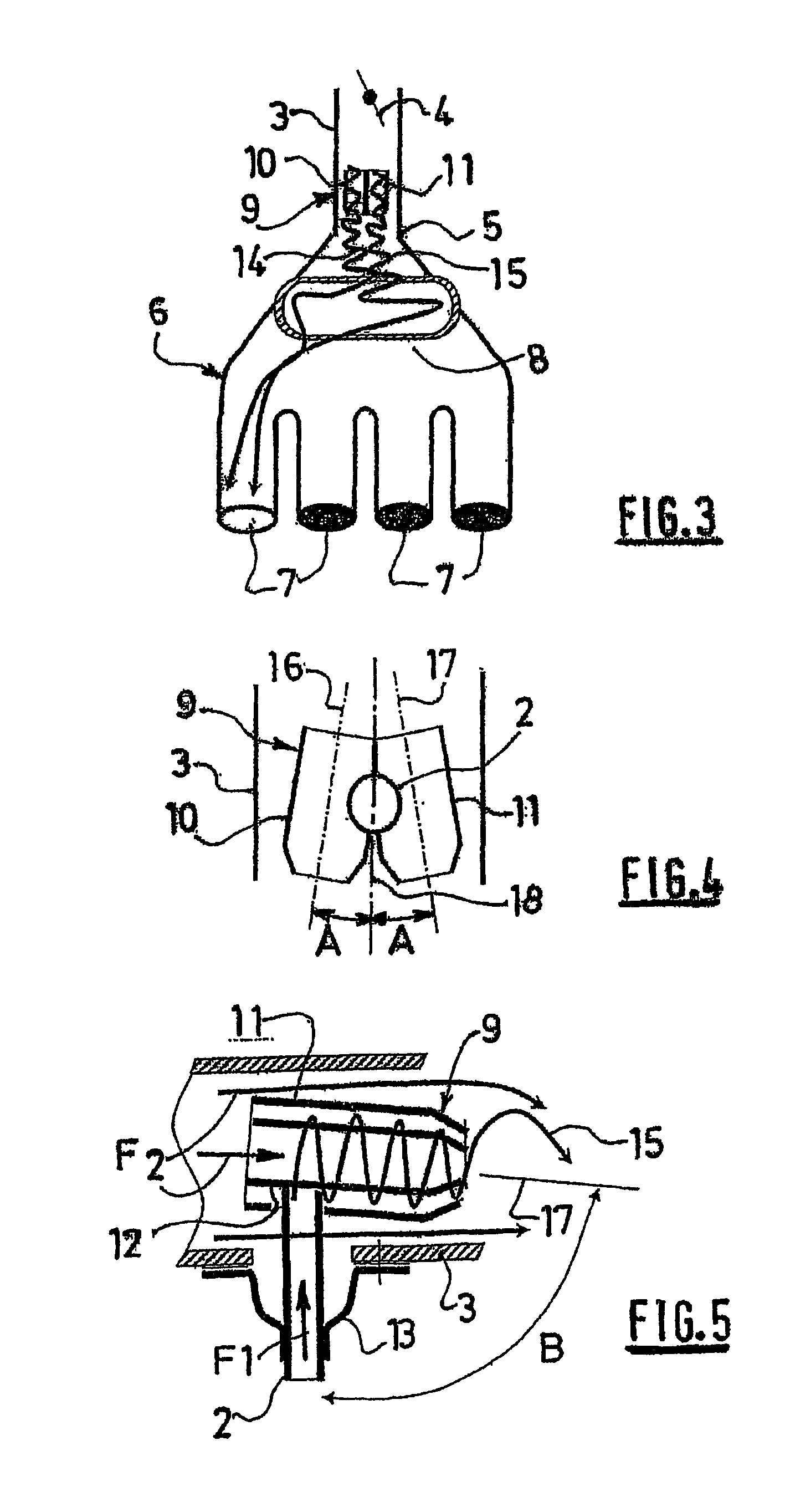Exhaust gas recirculation device for an internal combustion engine
a technology of exhaust gas recirculation and internal combustion engine, which is applied in the direction of combustion-air/fuel-air treatment, machine/engine, fuel air intake, etc., can solve the problems of insufficient or defective duct and manifold geometries, inability to meet the requirements of duct and manifold geometry, and the mixing of exhaust gas and air is less effective and uniform, so as to eliminate the shortfall of homogeneity of mixing and reduce the effect of duct and mani
- Summary
- Abstract
- Description
- Claims
- Application Information
AI Technical Summary
Benefits of technology
Problems solved by technology
Method used
Image
Examples
Embodiment Construction
[0040]In the exhaust gas recirculation device depicted schematically in FIGS. 1 to 3, the hot exhaust gases from an internal combustion engine are bled from an exhaust manifold (not depicted) by a pipe 2 which carries them to a fresh air inlet duct 3 of the internal combustion engine, downstream of an air intake flap 4 and upstream of the inlet 5 of a manifold 6 that has numerous outlets 7, for example four outlets, which follows on from the air inlet duct 3. The exhaust gases, arriving in the direction of the arrow F1, are thus mixed with some of the admitted fresh air flow, symbolized by the arrows F2, and the mixture created is directed, by the manifold 6, to the various cylinders of the engine concerned. More particularly, in the exemplary application illustrated here, the air inlet duct 3 has an oblong cross section, as visible in FIG. 1, and accordingly the manifold 6 has an inlet 5 and a plenum 8 both of flattened shape, as symbolized by the cross section indicated as an over...
PUM
 Login to View More
Login to View More Abstract
Description
Claims
Application Information
 Login to View More
Login to View More - R&D
- Intellectual Property
- Life Sciences
- Materials
- Tech Scout
- Unparalleled Data Quality
- Higher Quality Content
- 60% Fewer Hallucinations
Browse by: Latest US Patents, China's latest patents, Technical Efficacy Thesaurus, Application Domain, Technology Topic, Popular Technical Reports.
© 2025 PatSnap. All rights reserved.Legal|Privacy policy|Modern Slavery Act Transparency Statement|Sitemap|About US| Contact US: help@patsnap.com



